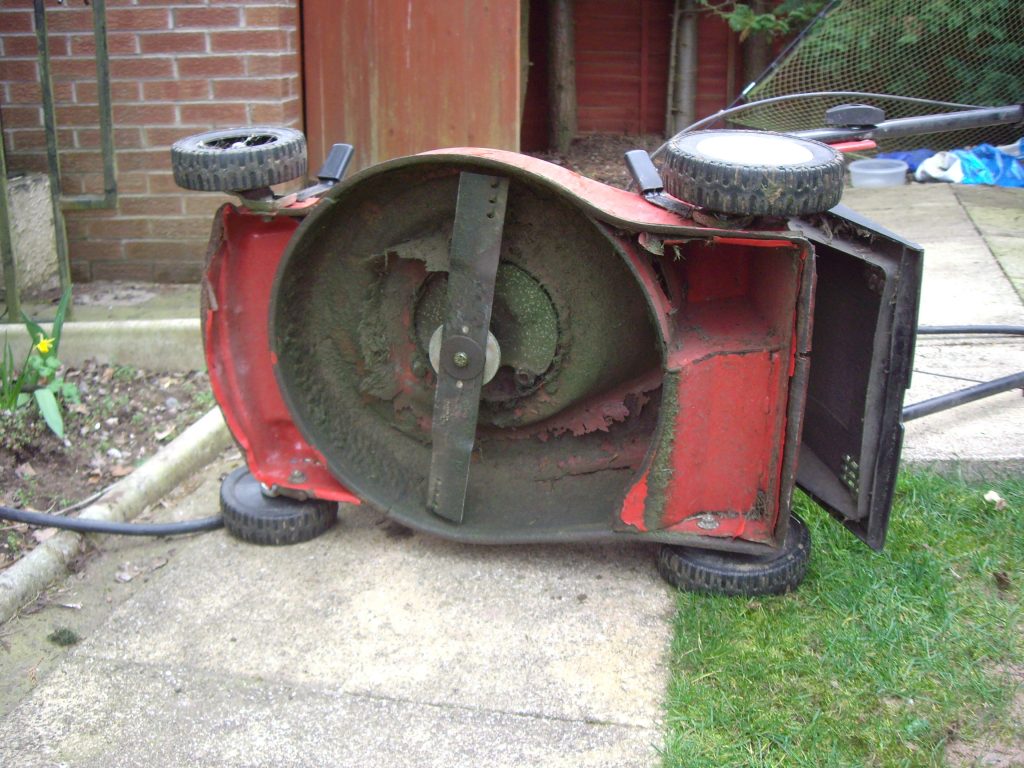Sebastian is a lawn enthusiast.
When I was a small child, my father also spent a lot of time taking care of his lawn, so in a way, I am following his footsteps. We moved into our present house, and there was a large, reasonably flat surface, about 180 m². My wife and I thought, how can we maintain this lawn?
I started reading several books, watched videos on YouTube. It was a process, and all were so different. I saw all the freaks, and I decided that this was the next thing I wanted to do.
Then, I bought different fertilizers, a proper lawnmower and I compared notes. I drove around my neighbourhood and saw two or three lawns that looked really nice, but the grass was not short enough for my liking.
I also needed sand. There were two possibilities. I could go to the hardware store and buy sand, in small quantities and very expensive. Another option was to go to the golf course in Baden-Baden. I spoke with the head greenkeeper, who is from England. He gave me the address, and I bought three trailers full of sand. Each trailer carried 750 kg.
Keeping a lawn is not expensive. Fertilizer costs around €100 per year. If you fertilize your lawn regularly. I do this procedure 10 times a year to achieve a better average supply of nutrients.
Another necessary piece of equipment is a specialist lawnmower (cylinder mower). I bought one last year which cost about €1.000. A cylinder mower gives me a perfect cut. It is like using a pair of scissors.
I use two different mowers. One is a rotary lawnmower. It is practical when the grass is really tall after the holidays, and you want to collect leaves in the autumn. It is also good after scarifying, getting rid of old grass that allows the lawn to breathe.
My cylinder lawnmower is the second one. I use it for regular and perfect cuts. It has interchangeable cartridges for brushing or scarifying.


I mow the lawn 2-3 times a week. Therefore, I decided to buy an accumulated lawnmower last year. There is no noise, and there are no exhaust emissions.
Another critical point is water and the amount needed. A lawn needs approximately 15-25/l per week and a square meter. So, you really have to think about irrigating your lawn. Therefore, I decided to use the existing well and combine it with a water tank for a better water flow rate.
I also record my fertilizer usage g/m2 on an Excel sheet. I needed to know which fertilizer to use when. One has to measure it, depending on the grass you have. It all gives me a better overview and makes planning things easier in the future.
We also use a so-called “Grünlandtemperature” system. Meteorologists calculate the sum of all plus temperatures, starting in January. When this sum reaches 200°, you can safely say that nature starts to wake up. I can begin fertilizing. At the time of writing (Jan22), it is at 38.7°. I think it is a little too warm.
I have two projects for the next few months. I need to raise the sprinklers. They are too deep in the ground, and grass will grow over them. The other project is to rent an aerator to allow more water and air into the soil, filling the holes with sand after it.
In the future, I want to continue raising the standard of my lawn. It is not perfect by any means. The surface needs to be flatter. I must reduce the height to about 1.5 cm to achieve this. The density of the lawn is crucial as well. I achieve this by cutting the grass by 30% each time. I do this about 3 times a week.
Perfection characterizes me. When I start something, I want it to be perfect, but there is also an aesthetic side. It looks aesthetically pleasing. It feels aesthetically pleasing when you touch it or walk over it. When I cut the lawn, it has to look really smooth.